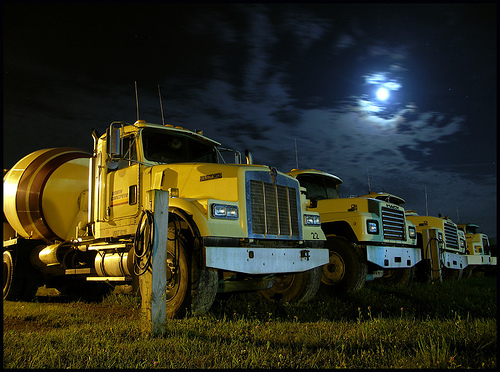
Let’s examine a case study to explain how purchase price allocation works and see where the various rules and regulations come into play.
Let’s start with the hypothetical Big River Farms, a business that farms and buys almonds, processes them into various value-added products, and then delivers the goods to market with their own transportation fleet. Based in the Northern California area, Big River has several orchards with all the expected ag equipment (sweepers, blowers, harvesters, reservoir carts, self-propelled nut transfer vehicles, mowers and shakers, etc.) and 3 large processing/packing operations, complete with a variety of food processing equipment. To expand into another region, Big River buys out Jack Straw Farms in Southern California for $10,000,000. Jack Straw is about the same size as Big River and has a competing value-added brand with most of its operations in Southern California. Jack Straw does, however, have a processing/packing facility close to Big River’s Arbuckle, CA, facility, so Big River decides to sell that facility — on a piecemeal basis — and move the operations to its own established facility in Arbuckle.
In the meantime, Big River’s CPA firm has to determine how the $10,000,000 purchase price is to be allocated to land, building, equipment and goodwill in order to start the books after the acquisition.
How might the CPA sort out the allocation? Your first thought might be that values for the various aspects of the operations were spelled out in the purchase agreement, but that’s rarely the case. You might think next that Jack Straw’s CPA would have that information, but let’s look at the reality of a business’s bookkeeping:
Since Mr. Straw himself started this company, he has no allocation for goodwill on his books. What does he have on the books? The land is at the value he paid for it years ago or perhaps the most recent property tax assessment value, which may or may not reflect its true value in the marketplace; the buildings and the equipment are listed at net book value (cost less depreciation), but that most assuredly does not reflect their true value in the marketplace. There may also be some inventory on-hand that will need to be valued, but that is pretty easy since Jack Straw will be able to provide documentation on what inventory cost.
Since none of the values for the land, building, equipment, or goodwill are readily available, Big River will need appraisals for each physical aspect of the operation — land, buildings and equipment — in order to accurately perform the purchase price allocation. The amount paid for the company in excess of the inventory, land, buildings and equipment value is determined to be the value of the business’s goodwill.
It is in the process of the valuation that regulations regarding Fair Value Accounting (ASC 820) comes in. Under fair value accounting rules, two different definitions of fair value need to be looked at: Fair Value, in-use, and Fair Value, in-exchange. As you read these definitions, keep in mind the particular circumstances of our case study, in which Big River intends to sell off some of Jack Straw’s processing equipment and facility:
Fair Value, in-use: The price that would be received for an asset or paid to transfer a liability in an orderly transaction between marketplace participants at the measurement date assuming that the asset is sold as part of an on-going operation and assumes that the asset is sold and consequently operated with the other assets in the group.
Fair Value, in-exchange: The price that would be received for an asset or paid to transfer a liability in an orderly transaction between marketplace participant at the measurement date assuming that the asset is sold on a stand-alone basis and independent of the other assets in its group.
The important difference between these two value definitions is that equipment is presumed to have different values depending on whether it is sold as part of an on-going operation or sold by the piece. Because of that — and because Big River intends to shut down and sell Jack Straw’s Arbuckle processing facility — it is very likely that some identical equipment involved in this purchase price allocation valuation will have materially different values. The equipment at the Arbuckle location will need to be valued at fair value in-exchange, while processing equipment at other locations would be valued at fair value, in-use. An important difference in these two values is that fair value in-exchange does not include installation costs, while fair value in-use does. That difference alone could easily result in materially different values for similar, if not identical, processing and packing equipment in the appraisal report.
There are, as you might imagine, many smaller moving parts involved in an equipment appraisal for purchase price allocation. The purpose of this case study is to sketch out the big picture on purchase price allocation valuations and the big question regarding equipment appraisals for these scenarios.
The take-way here is to be sure that both your CPA and your equipment appraiser understand the details of fair value accounting and purchase price allocation. As a CPA and an equipment appraiser, this is the kind of appraisal I really enjoy. It’s one of several areas of appraisal practice that overlaps very nicely with my CPA background. If you have any questions regarding equipment valuation and business combinations, I’m always happy to discuss this topic! I hope you’ll give me a call or have your CPA ring up our office at 530.795.5536 whenever you find yourself in need of an appraisal for any financial reporting purpose, and especially purchase price allocations for your business expansion.
Jack Young, ASA, CPA
Business Combination Equipment Appraiser
NorCal Valuation Inc.




